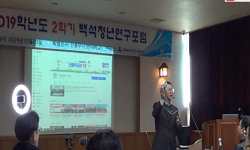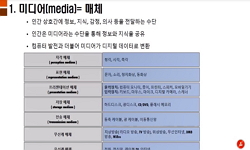This paper aims to examine how ‘morpheme’ has been used in describing Korean language. In Korean phonology, ‘morpheme’ is frequently needed to describe phonological phenomena. When underlying forms are determined, they deal with morphemes. But...
http://chineseinput.net/에서 pinyin(병음)방식으로 중국어를 변환할 수 있습니다.
변환된 중국어를 복사하여 사용하시면 됩니다.
- 中文 을 입력하시려면 zhongwen을 입력하시고 space를누르시면됩니다.
- 北京 을 입력하시려면 beijing을 입력하시고 space를 누르시면 됩니다.
https://www.riss.kr/link?id=A82413819
- 저자
- 발행기관
- 학술지명
- 권호사항
-
발행연도
2010
-
작성언어
Korean
-
주제어
형태소 ; 통사원자 ; 기저형 ; 이형태 ; 맞춤법 ; 교체 ; 활용 ; morpheme ; syntactic atom ; underlying form ; allomorph ; orthography ; alternation ; inflection
-
등재정보
KCI등재
-
자료형태
학술저널
-
수록면
1-35(35쪽)
-
KCI 피인용횟수
16
- 제공처
- 소장기관
-
0
상세조회 -
0
다운로드
부가정보
다국어 초록 (Multilingual Abstract)
Although we understand morphology as a branch to generate words from morphemes, we do not need to rely on the concept of ‘morpheme’. Sometimes it becomes an obstacle to understand morphological phenomena and classification of morphemes is mixed with word classes. Both Stem and root are not morphemes. Even though affixes and endings correspond to morphemes, we do not need the word ‘concept’ for them as we do not need it for stems and roots.
Syntax does not need the concept of ‘morpheme’ because it deals with syntactic units. But it has been used in syntactic description for the reason that JO-SAs(case markers and delimiters) and endings correspond to morphemes. But, in syntax, it does not necessary to use the word ‘morpheme’ because it is possible to analyse some JO-SAs and endings to more than two morphemes.
Korean orthography relies on the concept ‘morpheme’. A morpheme should be written as a single form in principle. If a morpheme has irregular allomorphs, they are written as themselves. But the rules of Korean orthography do not include the word ‘morpheme’. They do not state definitely about how to write morphemes when they have more than two syllables. Therefore some dictionary writes affixes by syllables as if they consist of two units. If they are composed of two morphemes, we have affixes with two morphemes.
As discussed so far, the concept have some problems. Therefore some students, especially middle schools students have difficulty in understanding it. We suggest that the concept ‘morpheme’ should be restricted to analyze from the theoretical and grammar educational viewpoint.
This paper aims to examine how ‘morpheme’ has been used in describing Korean language. In Korean phonology, ‘morpheme’ is frequently needed to describe phonological phenomena. When underlying forms are determined, they deal with morphemes. But we do not need morphemes to determine underlying forms by synchronic phonological rules because they become similar to syntactic atoms. Phonology can be concretely related to syntax.
Although we understand morphology as a branch to generate words from morphemes, we do not need to rely on the concept of ‘morpheme’. Sometimes it becomes an obstacle to understand morphological phenomena and classification of morphemes is mixed with word classes. Both Stem and root are not morphemes. Even though affixes and endings correspond to morphemes, we do not need the word ‘concept’ for them as we do not need it for stems and roots.
Syntax does not need the concept of ‘morpheme’ because it deals with syntactic units. But it has been used in syntactic description for the reason that JO-SAs(case markers and delimiters) and endings correspond to morphemes. But, in syntax, it does not necessary to use the word ‘morpheme’ because it is possible to analyse some JO-SAs and endings to more than two morphemes.
Korean orthography relies on the concept ‘morpheme’. A morpheme should be written as a single form in principle. If a morpheme has irregular allomorphs, they are written as themselves. But the rules of Korean orthography do not include the word ‘morpheme’. They do not state definitely about how to write morphemes when they have more than two syllables. Therefore some dictionary writes affixes by syllables as if they consist of two units. If they are composed of two morphemes, we have affixes with two morphemes.
As discussed so far, the concept have some problems. Therefore some students, especially middle schools students have difficulty in understanding it. We suggest that the concept ‘morpheme’ should be restricted to analyze from the theoretical and grammar educational viewpoint.
목차 (Table of Contents)
- 1. 들어가는 말
- 2. 음운론과 형태소
- 3. 형태론과 형태소
- 4. 통사론과 형태소
- 5. 어문규범과 형태소
- 1. 들어가는 말
- 2. 음운론과 형태소
- 3. 형태론과 형태소
- 4. 통사론과 형태소
- 5. 어문규범과 형태소
- 6. 맺음말
- 참고문헌
- [Abstract]
참고문헌 (Reference)
1 최웅환, "형태소의 유형 분류" 문학과언어학회 30 : 2-26, 2008
2 고영근, "형태소의 분석 한계" (3) : 29-35, 1978
3 고영근, "형태소의 교체와 형태론의 범위 -형태음운론적 교체를 중심으로-" 국어학회 (46) : 19-52, 2005
4 김진두, "형태소어기이론과 단어어기이론에 대한 비교연구" 한국중앙영어영문학회 50 (50): 71-84, 2008
5 이홍식, "형태분석의 방법에 대하여" 숙명여자대학교 지역학연구소 8 : 29-54, 2005
6 박진호, "형태론의 제자리 찾기 -인접 학문과의 관계를 중심으로" 1 : 319-340, 1999
7 송철의, "형태론과 음운론" 국어학회 35 : 287-311, 2000
8 최명옥, "현대 한국어의 공시 형태론 - 경주지역어를 실례로" 서울대학교출판부 2008
9 배주채, "한국어의 발음" 삼경문화사 2003
10 강옥미, "한국어 음운론" 태학사 2003
1 최웅환, "형태소의 유형 분류" 문학과언어학회 30 : 2-26, 2008
2 고영근, "형태소의 분석 한계" (3) : 29-35, 1978
3 고영근, "형태소의 교체와 형태론의 범위 -형태음운론적 교체를 중심으로-" 국어학회 (46) : 19-52, 2005
4 김진두, "형태소어기이론과 단어어기이론에 대한 비교연구" 한국중앙영어영문학회 50 (50): 71-84, 2008
5 이홍식, "형태분석의 방법에 대하여" 숙명여자대학교 지역학연구소 8 : 29-54, 2005
6 박진호, "형태론의 제자리 찾기 -인접 학문과의 관계를 중심으로" 1 : 319-340, 1999
7 송철의, "형태론과 음운론" 국어학회 35 : 287-311, 2000
8 최명옥, "현대 한국어의 공시 형태론 - 경주지역어를 실례로" 서울대학교출판부 2008
9 배주채, "한국어의 발음" 삼경문화사 2003
10 강옥미, "한국어 음운론" 태학사 2003
11 남기심, "표준 국어문법론" 탑출판사 1993
12 박진호, "통사적 결합 관계와 논항구조" 서울대 국어연구회 123 : 1994
13 임동훈, "통사론과 통사 단위" 서울대학교 어학연구소 31 (31): 87-138, 1995
14 이홍식, "통사단위의 분석에 관한 몇 가지 문제, in: 우리말 연구 서른아홉 마당" 태학사 353-380, 2005
15 교육과학기술부, "중학교 교육과정 해설 Ⅱ"
16 김영욱, "중세국어의 존비법에 대한 연구" 서울대 국어연구회 89 : 1989
17 이진호, "음운 교체 양상의 변화와 공시론적 기술" 서울대학교 대학원 2002
18 고영근, "우리말 문법론" 집문당 2008
19 최형용, "어근과 어기에 대하여" 형태론 4 (4): 301-318, 2002
20 송원용, "시정곤(1998)의 단어 개념을 다시 생각함"" 박이정 1 (1): 143-151, 1999
21 박진호, "선어말어미 ‘-시-’의 통사구조상의 위치" 서울대학교 국어국문학과 19 : 75-82, 1994
22 신승용, "사전(lexicon)과 복수기저형 및 활용형" 한국어학회 37 : 75-104, 2007
23 우순조, "모빌구조와 표지이론에 의한 한국어 통사․의미 기술" 한국언어학회 22 : 291-328, 1998
24 하치근, "말본 형태소의 공형태소 되기 연구" 250 : 117-156, 2000
25 시정곤, "국어의 단어형성 원리(수정판)" 한국문화사 1998
26 김무림, "국어음운론" 한신문화사 2009
27 이익섭, "국어문법론강의" 학연사 1999
28 임홍빈, "국어문법론Ⅰ" 한국방송통신대학교출판부 1995
29 서태룡, "국어 형태론에 기초한 통사론을 위하여" 국어학회 35 : 252-376, 2000
30 서정목, "국어 의문문 연구" 탑출판사 1987
31 최명옥, "국어 음운론" 태학사 2004
32 우순조, "국어 어미의 통사적 지위" 국어학회 30 : 223-256, 1997
33 문화관광부, "국어 어문 규정집" 대한교과서주식회사 1988
34 박재현, "국어 문법 교육 용어 계량 연구(II): 단어" 국어교육연구소 (21) : 169-193, 2008
35 임홍빈, "국어 굴절의 원리적 성격과 재구조화" 서울대학교 국어국문학과 22 : 93-163, 1997
36 이문규, "국어 교육을 위한 현대 국어 음운론" 한국문화사 2004
37 "국립국어원 표준국어대사전"
38 신승용, "교체의 有無와 규칙의 共時性·通時性" 한국어문교육연구회 32 (32): 63-91, 2004
39 이홍식, "교체와 관련된 몇 가지 문제" 22 : 247-272, 2000
40 이혁화, "교체에 대하여" 형태론 4 (4): 59-80, 2002
41 시정곤, "공형태소와 형태 분석에 대하여" 국어학회 (57) : 3-30, 2010
42 김영욱, "공형태소에 대하여" 서울시립대 국문과 9 : 181-198, 1997
43 이선웅, "공형태소를 또다시 생각함" 국어학회 (55) : 3-26, 2009
44 시정곤, "공형태소를 다시 생각함" 한국어학회 12 : 147-165, 2000
45 장윤희, "공형태 분석의 타당성 검토" 1 : 227-244, 1999
46 최명옥, "變則動詞의 音韻現象에 대하여 - lɨ, lə, ɛ(jə)-, h-變則動詞를 中心으로-" 서울대학교 어학연구소 24 (24): 41-68, 1988
47 최명옥, "國語 UMLAUT의 硏究史的 檢討 - 共時性과 通時性을 中心으로-" 震檀學會 65 : 63-80, 1988
48 최형강, "‘형성소’와 ‘어근’ 개념의 재고를 통한 ‘어근 분리 현상’의 해석" 국어학회 (56) : 33-61, 2009
동일학술지(권/호) 다른 논문
-
- 한국어문학회
- 박숙희(Bak Suk-hui)
- 2010
- KCI등재
-
- 한국어문학회
- 정수진(Jeong Su-jin)
- 2010
- KCI등재
-
- 한국어문학회
- 이광호(Lee Kwang-ho)
- 2010
- KCI등재
-
1940년대 이광수의 역사 내러티브와 민족주의 담론의 양상
- 한국어문학회
- 김경미(Kim Kyung-mi)
- 2010
- KCI등재
분석정보
인용정보 인용지수 설명보기
학술지 이력
| 연월일 | 이력구분 | 이력상세 | 등재구분 |
|---|---|---|---|
| 2026 | 평가예정 | 재인증평가 신청대상 (재인증) | |
| 2020-01-01 | 평가 | 등재학술지 유지 (재인증) |  |
| 2017-01-01 | 평가 | 등재학술지 유지 (계속평가) |  |
| 2013-01-01 | 평가 | 등재학술지 유지 (등재유지) |  |
| 2010-01-01 | 평가 | 등재학술지 유지 (등재유지) |  |
| 2008-01-01 | 평가 | 등재학술지 유지 (등재유지) |  |
| 2006-01-01 | 평가 | 등재학술지 유지 (등재유지) |  |
| 2004-01-01 | 평가 | 등재학술지 유지 (등재유지) |  |
| 2001-07-01 | 평가 | 등재학술지 선정 (등재후보2차) |  |
| 1999-01-01 | 평가 | 등재후보학술지 선정 (신규평가) |  |
학술지 인용정보
| 기준연도 | WOS-KCI 통합IF(2년) | KCIF(2년) | KCIF(3년) |
|---|---|---|---|
| 2016 | 0.56 | 0.56 | 0.56 |
| KCIF(4년) | KCIF(5년) | 중심성지수(3년) | 즉시성지수 |
| 0.54 | 0.53 | 0.99 | 0.1 |




 DBpia
DBpia







